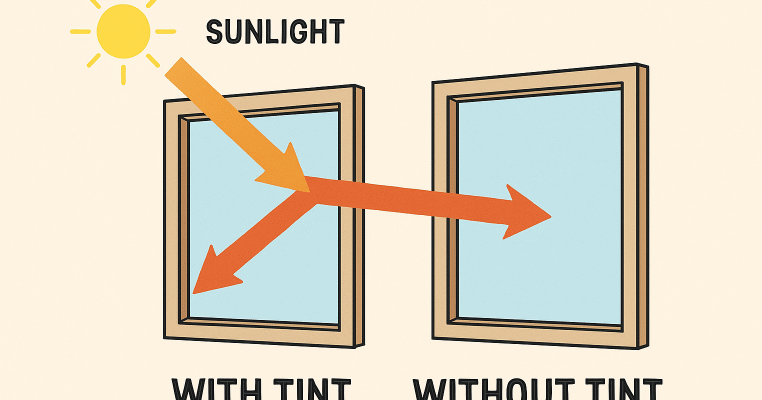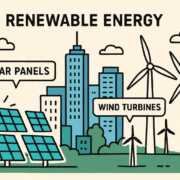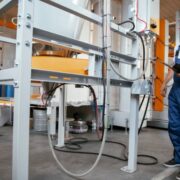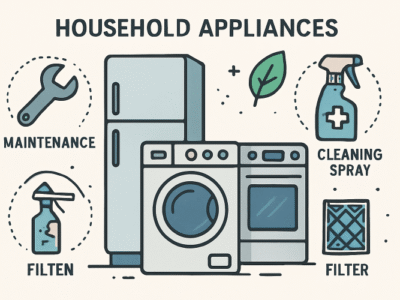Key Takeaways
- Window tinting dramatically decreases summer heat by blocking UV and infrared rays.
- Tints improve comfort, protect interiors, and save energy for both vehicles and buildings.
- Various tint types suit different needs, with ceramic films offering top performance.
- Legal regulations must be checked before installation to avoid issues or fines.
Introduction
With sweltering summer temperatures challenging comfort and utility bills, discovering effective cooling solutions is top of mind for homeowners and drivers alike. While air conditioning plays a significant role, innovative strategies like window tinting can provide noticeable results by addressing the root of heat gain and loss. Not only does window tinting provide relief during the hottest months, but it also delivers year-round benefits for enhanced comfort and improved efficiency.
Window tinting acts as a high-impact improvement, blocking excess sunlight and radiant heat from entering your space or vehicle. This modest upgrade delivers an impressive return: cooler interiors, enhanced longevity for surfaces, and lower energy costs. If you’re in Florida and looking to improve your vehicle, discover ceramic coating for cars in Boynton Beach, FL, a service often paired with high-performance tints for maximum protection.
The Science Behind Window Tinting
Window tint films are engineered to control the transfer of energy through glass. The best films reflect or absorb UV (ultraviolet) and IR (infrared) rays, two wavelengths primarily responsible for overheating interiors and fading upholstery. By blocking up to 99% of UV rays and a significant portion of the incoming infrared radiation, tinted glass helps keep indoor or vehicle spaces cooler. It protects people and objects from sun-related damage.
Additionally, by reducing the influx of solar heat, tinting enables air conditioning systems to operate more efficiently, thereby decreasing power consumption and enhancing overall sustainability. According to the U.S. Department of Energy, improving window performance is a crucial strategy for reducing heat gain and enhancing energy savings in hot climates. Learn more about window efficiency from EnergySaver.gov.
When window tints are applied professionally, their temperature-control properties are immediate and measurable. The interior of a car or sunny office can stay significantly cooler even on the hottest days, preventing the cabin or workspace from becoming uncomfortably hot. If you’re seeking local expertise in Florida, consider automotive ceramic coating near me for advanced window and surface protection solutions.
Benefits for Vehicles
Drivers in sunny regions are all too familiar with overheated steering wheels and stifling interiors. Quality window tinting can reduce a car’s interior temperature by up to 25°F during peak sunshine. That means stepping inside after a day at work or running errands no longer delivers a blast of stifling heat. By minimizing heat buildup, the air conditioner operates more efficiently, resulting in reduced fuel consumption and lower engine wear.
Besides providing coolness and comfort, window tinting also prolongs the life of interior materials like leather, plastic, and fabric, which are prone to fading and cracking due to constant sun exposure. Significantly, tints also block damaging UV rays, helping shield passengers from the harmful effects of long-term UV exposure. As reviewed by the American Cancer Society, minimizing UV exposure is essential for long-term skin health.
Advantages for Homes and Offices
The benefits of window tinting extend far beyond automotive applications, making it a wise investment for homeowners and business owners alike. By blocking solar heat from entering through windows, tints can cut summer cooling costs by as much as 15–30% in warm climates. This results in substantial savings on utility bills and reduced environmental impact, especially in regions with abundant sunlight.
Additional perks include reduced screen glare, which is essential for productivity in offices, and enhanced privacy for occupants. Window films also act as a guard for floors, carpets, drapes, and furnishings, preventing premature aging caused by harsh sunlight passing through untreated glass. Reliable sources, such as The New York Times’ Guide to Saving Energy at Home, provide further insight into the importance of window upgrades for efficient living.
Types of Window Tints
No single tint fits every need, and the right choice depends on the desired balance of performance, aesthetics, and budget. The three most common categories of auto window tints are:
- Dyed Films: A budget-friendly option, these tints reduce glare and improve privacy, but offer moderate heat rejection compared to advanced films. They’re ideal for a boost in comfort and style at a lower cost.
- Metalized Films: Engineered with tiny metallic particles, these tints reflect heat and UV rays very effectively. However, the metals can sometimes interfere with GPS, mobile, or radio signals, so suitability depends on your need for uninterrupted digital connectivity.
- Ceramic Films: The gold standard in modern tinting, ceramic tints offer unparalleled UV and infrared blocking, outstanding optical clarity, and zero interference with electronics. These high-tech films are especially recommended for vehicles packed with sensitive electronics or for premium home/office installations.
Legal Considerations
Local and regional laws strictly regulate the permissible darkness (VLT%) and reflectivity of window tints for both vehicles and buildings. Each state, and often each municipality, enforces its own guidelines. Noncompliance can result in fines, mandatory removal, or even unsafe visibility conditions, so it’s crucial to check local statutes before installation. Consult official transportation authority websites or reputable local shops for the most current guidelines in your area.
Conclusion
Window tinting is an effective, efficient solution for reducing summer heat and optimizing indoor environments. With benefits including lower interior temperatures, energy savings, UV protection, and lasting property value, professional tint installations help you stay comfortable, save money, and safeguard your spaces. With numerous materials and technology options available today, it pays to consider a trusted provider for expert results tailored to your specific needs.
If you want more exciting content, visit. Globallyviz.com














Comments